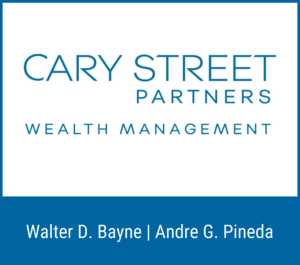On Tuesday evening, the Fredericksburg City Council held a joint work session with the Fredericksburg Planning Commission to discuss the creation of a Technology Overlay District (TOD).
So, what is a technology overlay district?
Seems like a good starting point. A TOD is basically a zoning designation that allows the development of data centers by-right (or without a special-use permit and associated public process). Essentially, the district overrides the existing zoning of the area.
It permits other uses, too, including:
- College or university
- Vocational or trade school
- Research and development
- Light manufacturing
- Major and minor utilities
But let’s be real. The current conversation is being driven by data centers.
Where is it?
The proposed district covers about 250 acres in the north end of Area 1, sometimes referred to as Celebrate Virginia South.
Generally speaking, the area is located to the west of Interstate 95 near Gordon W. Shelton Boulevard and abuts the city’s quarry trail system to the north.
The proposed TOD comprises nine parcels, eight of which have addresses off Shelton Boulevard.
What standards have been discussed for data centers within a TOD?
Let’s start with water.
Data centers use large amounts of it for cooling, but the TOD maintains that no use “shall be permitted to permanently utilize potable (drinking) water for industrial cooling.” Exceptions will be made for sanitation (think bathrooms) and drinking water.
Potable water could, however, be used on a temporary basis while an industrial cooling system is being constructed. All water use would be governed by a “water services agreement” between the city and a data center company.
Building standards and setbacks are also specified. The proposed TOD requires data center campuses to be a minimum of 75 acres, which is a reduction from the previously proposed footprint of 150 acres. Buildings would be limited to a height of 90 feet.
Any data center campus would need to be set back 200 feet from adjacent residential development, 150 feet from adjacent planned developments and 100 feet from adjacent commercial developments.
Debating decibels
The TOD also includes noise standards that would apply to data centers or any other development.
Developments would be limited to A-weighted decibel levels (more on these later) of 60 dBA during the day and 55 dBA at night. That decibel level is somewhere between the hum of a refrigerator and a conversation.
So. Much. Money.
At one point in the meeting, Councilor Jason Graham asked City Manager Tim Baroody if he could remind everyone of the city’s total budget.
Baroody replied that the current year’s fiscal budget was approximately $128 million.
The presentation from Director of Economic Development Josh Summits estimated a fiscal impact of $59,5 million per year.
That dollar amount is based on tax revenue from the full buildout of a 12-building data center campus in the city. Data center equipment is taxed at a rate of $1.25 per $100 of assessed value, while the real estate itself is taxed at a rate of 77 cents per $100.
“Almost half of our entire city budget would be right there,” Graham said. “I just wanted to point that out in case folks weren’t sure of the scale.”
What needs to happen to create a TOD?
Three things. The city must initiate: a Comprehensive Plan Amendment that alters the Area 1 Small Area Plan that currently “contemplates a mix of uses including some residential development”, according to a memo from Tuesday’s meeting; a Unified Development Ordinance (UDO) Amendment to establish data centers as a by-right use; a zoning map amendment to apply a TOD to the north end of Area 1.
During Tuesday’s city council regular meeting (much) later Tuesday, the council voted 6-0 to initiate that process. Councilor Tim Duffy stepped down in December, and his Ward 3 seat hasn’t been filled.
An amendment by Graham reverted the minimum size of a data center campus to 150 acres.
What happens next?
On Jan. 22, the Planning Commission will hold a joint session with councilors, followed by a public input session from 5:30-7:30 p.m.
Public hearings are scheduled for Feb. 12 and Feb. 25, during meetings of the Planning Commission and City Council, respectively.
Who was there?
The conference room on the third floor of City Hall was packed.
Besides city officials and staff, journalists, and environmental activists, several representatives from the Silver Companies were in attendance, including CEO Larry D. Silver and President Spencer Silver. Last month, the company made two separate land purchases totaling 126 acres in the area, adding to the 65 acres they already owned in the area.
Hirschler Fleischer attorney Charlie Payne, who has previously represented data center developers (or end users, as they’re sometimes referred to) in the region, got a fist bump from Larry Silver on his way out of the meeting.
A meta moment
Summits’ presentation referenced “A-weighted decibels,” but no one seemed to know what those were off the top of their heads.
So, Planning Commissioner David Durham whipped out his phone and Googled it.
“A-weighted decibels are a common measure for how the human ear perceives sounds,” Durham said. “A-weighted decibels are the most common way to measure loud noise.”
“I just used a data center for that,” he added.
Sorry, Todd
Toward the end of Tuesday’s work session, Todd Brown, the city’s well-respected director of parks, recreation and events, waited dutifully outside in the hallway, prepared to deliver his annual parks presentation and master update.
However, with 6:30 p.m. rapidly approaching, Mayor Kerry Devine announced that the council wouldn’t be getting to Brown’s presentation, which was the last item on Tuesday’s agenda.
Time flies when you’re discussing data centers.
























